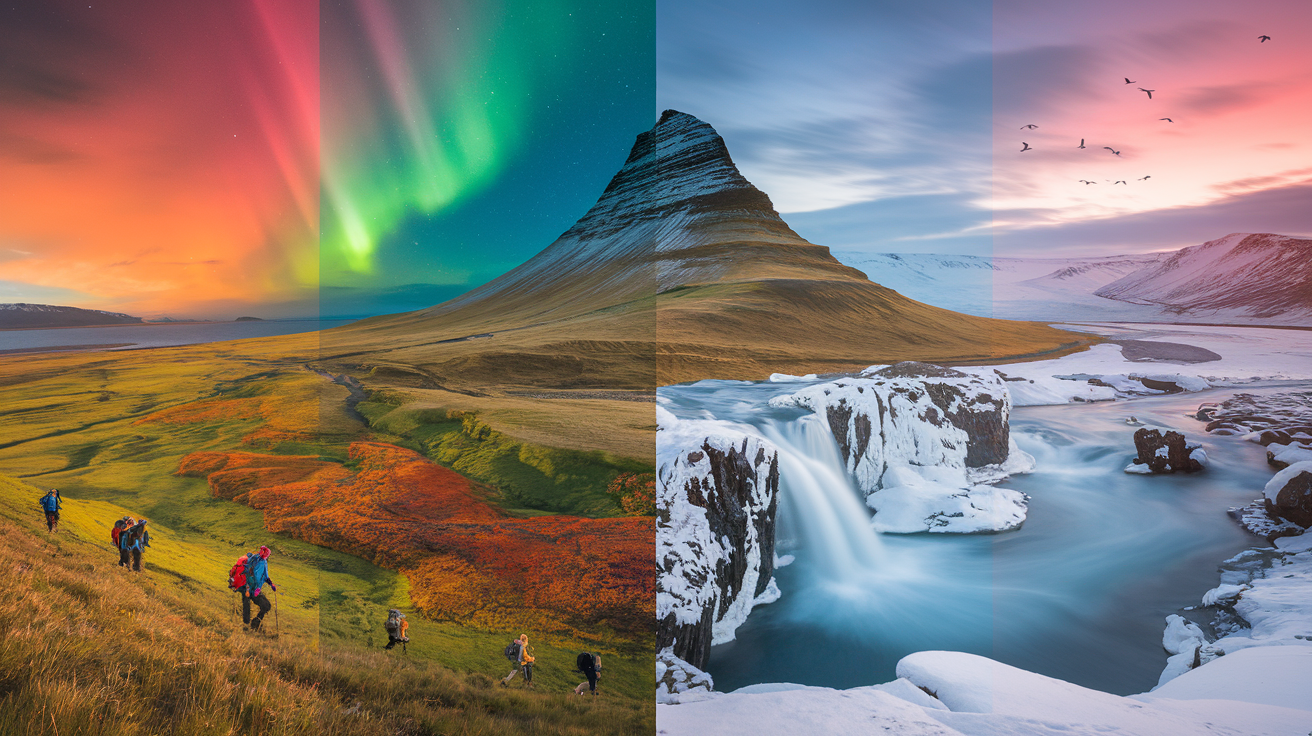The Ultimate Guide to Iceland’s Best Travel Seasons
Contents
- 1 Ever planned an Iceland trip only to arrive in Reykjavík during a 19-hour rainstorm with winds strong enough to flip your rental car? I have, and trust me, timing is everything in the land of fire and ice.
- 2 Understanding Iceland’s Unique Climate
- 3 Summer in Iceland (June-August): Peak Season Magic
- 4 Fall in Iceland (September-October): The Colorful Transition
- 5 Winter in Iceland (November-March): Enchanting Ice Wonderland
- 6 Spring in Iceland (April-May): Nature’s Awakening
- 7 Regional Variations in Iceland’s Climate
- 8 Planning Your Perfect Iceland Trip
Ever planned an Iceland trip only to arrive in Reykjavík during a 19-hour rainstorm with winds strong enough to flip your rental car? I have, and trust me, timing is everything in the land of fire and ice.
Iceland’s best travel seasons depend entirely on what you’re chasing. Northern Lights? Summer midnight sun? Budget-friendly prices? That dream glacier hike?
I’ve spent 47 weeks exploring Iceland across all seasons, and I’m about to save you from the mistakes that had me hiding in a hostel for three days straight while my itinerary collected dust.
The real magic of planning the perfect Iceland vacation isn’t just knowing when to go—it’s understanding why certain times deliver experiences others simply can’t touch. And it all starts with one question nobody’s travel agent is asking you…
Understanding Iceland’s Unique Climate
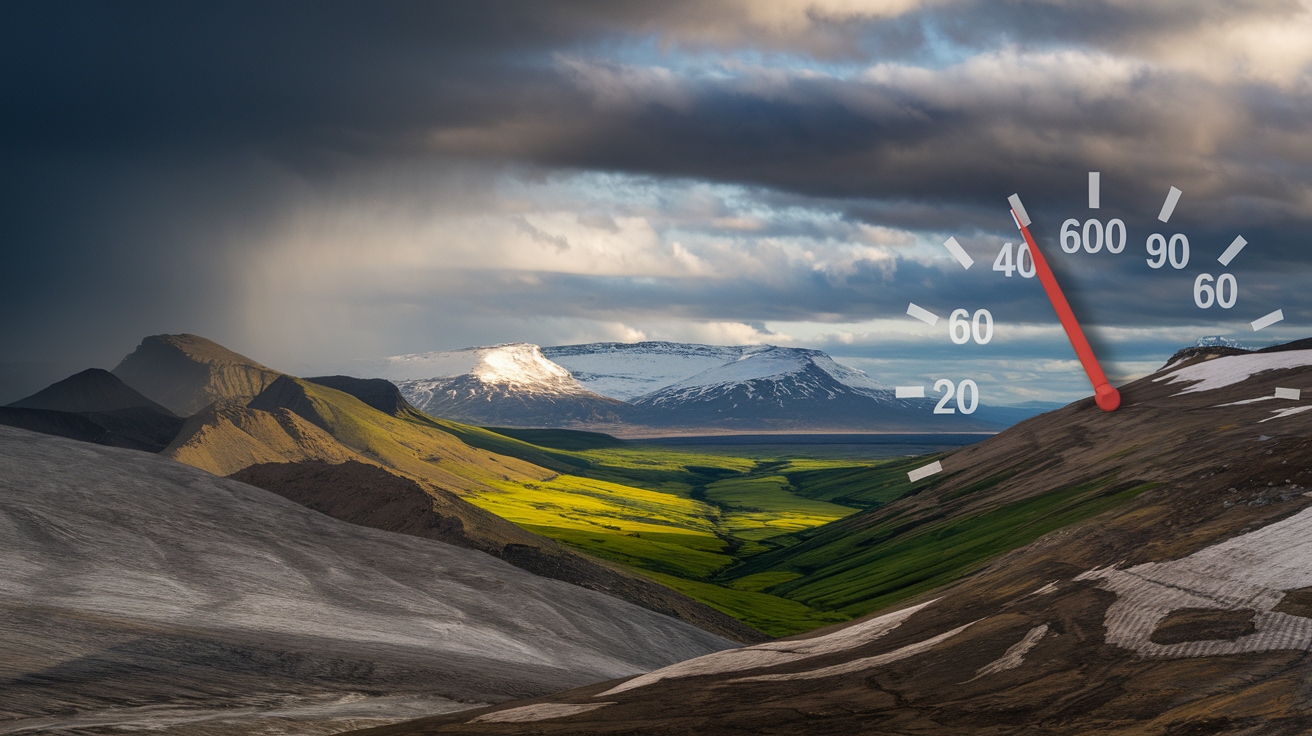 How the Gulf Stream Creates Milder Temperatures
How the Gulf Stream Creates Milder Temperatures
Iceland sits just below the Arctic Circle, so you’d expect it to be a frozen wasteland year-round. But surprise! It’s actually much milder than its location suggests.
Here’s the magic behind it: the Gulf Stream. This warm ocean current travels all the way from the Gulf of Mexico, crosses the Atlantic, and wraps around Iceland like a cozy blanket. The result? Temperatures that rarely dip below -10°C (14°F) in winter or exceed 20°C (68°F) in summer.
Without this natural heating system, Iceland would be as cold as Greenland or northern Canada. Instead, the southwest coast around Reykjavik averages around 0°C (32°F) in January. Not exactly beach weather, but definitely manageable with the right layers.
The Gulf Stream’s influence isn’t equal everywhere, though. The north and east coasts typically run 1-2°C cooler than the south and west. And inland areas, especially at higher elevations, get significantly colder.
Daylight Hours Across Seasons: Midnight Sun to Polar Nights
Iceland’s daylight situation is wild. The country experiences some of the most dramatic seasonal light changes on Earth.
Summer in Iceland means the famous midnight sun. In late June, Reykjavik gets about 21 hours of daylight, with the sun barely dipping below the horizon for a few hours of twilight. The further north you go, the more extreme it gets. In Akureyri and other northern towns, the sun doesn’t fully set for weeks.
Winter flips the script completely. December days in Reykjavik offer just 4-5 hours of daylight, with the sun rising around 11am and setting by 3:30pm. The north gets even less light.
This light cycle creates some interesting travel dynamics:
-
Summer: Endless days for exploring (but bring an eye mask for sleeping!)
-
Spring/Fall: Balanced day/night cycles with 12-14 hours of daylight
-
Winter: Brief, golden daylight hours with extended blue hour photography opportunities
Precipitation Patterns Throughout the Year
If there’s one weather guarantee in Iceland, it’s unpredictability. The old saying “if you don’t like the weather, wait five minutes” could have been invented here.
Iceland is wet – no two ways about it. The south coast gets drenched with up to 3,000mm (118 inches) of annual precipitation, while the north receives a more modest 500mm (20 inches). October through March are typically the wettest months.
In winter, that precipitation often falls as snow, especially in the highlands and northern regions. The south and coastal areas typically see rain and sleet rather than heavy snow, though brief snowstorms can happen anywhere.
What makes Iceland’s precipitation tricky is how quickly it changes. You might experience sunshine, rain, sleet, and snow – all within a single afternoon. This is especially true during the shoulder seasons of spring and fall.
How Weather Impacts Travel Experiences
Iceland’s weather doesn’t just determine what you’ll pack – it fundamentally shapes your entire experience.
Summer (June-August) offers the most reliable weather, with temperatures between 10-15°C (50-59°F). This is prime time for hiking, camping, and exploring the highlands on F-roads that remain closed the rest of the year. The tradeoff? Peak crowds and prices.
Winter (November-March) transforms Iceland into a completely different country. The landscape becomes a stunning monochrome canvas, perfect for northern lights hunting and ice cave exploration. But be prepared for limited daylight, road closures, and potential storms that can derail even the best-planned itineraries.
The shoulder seasons (April-May and September-October) offer a middle ground – fewer tourists, moderate daylight hours, and the chance to see either spring wildflowers or fall colors. The weather is especially changeable during these months, so flexibility is key.
Your experience at major attractions also varies dramatically by season:
-
The Blue Lagoon feels magical in winter snow but gets crowded in summer
-
Waterfalls like Skógafoss may partially freeze in winter but reach peak flow during spring melt
-
The Ring Road is easily navigable in summer but can have challenging sections in winter
Summer in Iceland (June-August): Peak Season Magic
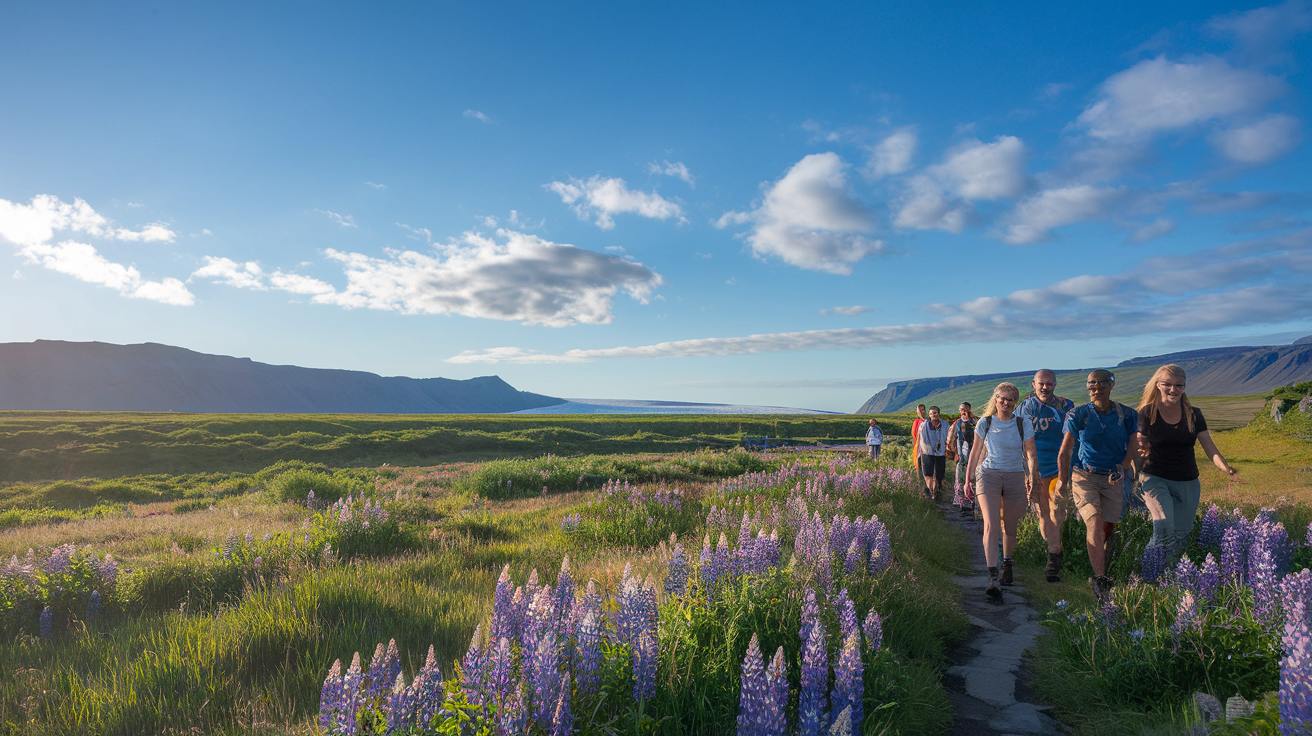
Ever wondered what it’s like when the sun barely sets? Summer in Iceland gives you the midnight sun – a phenomenon that’ll transform your travel experience completely.
With daylight stretching nearly 24 hours (the sun technically dips below the horizon for just 2-3 hours in June and July), you can literally pack two days of sightseeing into one. Imagine standing at Skógafoss waterfall at midnight with golden light bathing the cascade. Or driving the Ring Road at 11 PM with perfect visibility and barely another car in sight.
This extended daylight isn’t just a cool spectacle – it’s a practical advantage. You can start your day whenever you want and explore until you’re actually tired, not just because darkness forced you to stop. Many travelers tell me they’ve spontaneously decided to hike to a remote hot spring at 9 PM simply because, well, they could!
The constant light also means better photos throughout your trip. No rushing to catch the “golden hour” – in Icelandic summer, golden hour lasts for hours.
Bonus tip: Those extra daylight hours mean you can fit way more into a shorter trip, saving on accommodation costs. Just remember to bring a good eye mask for sleeping!
Optimal Hiking Conditions in the Highlands
Summer is the only time when Iceland’s magnificent Highlands become truly accessible, and trust me – they’re worth the wait.
From mid-June through August, the interior F-roads finally open after being buried under snow and ice for most of the year. This unlocks jaw-dropping landscapes that most visitors never see: the rainbow-colored rhyolite mountains of Landmannalaugar, the moon-like terrain of Askja, and the turquoise crater lake at Kerlingarfjöll.
The hiking conditions? Nearly perfect. Temperatures hover between 10-15°C (50-60°F) – cool enough to prevent overheating on challenging trails but warm enough to be comfortable with just a few layers. The ground is usually dry enough for solid footing, streams are crossable, and visibility tends to be excellent.
Thorsmork valley transforms into a hiker’s paradise during these months. The famous Laugavegur trek – consistently rated among the world’s best multi-day hikes – is only doable during this brief summer window.
What makes Highland hiking in summer particularly special is the contrast of extremes: you might cross a small snowfield, then minutes later walk through fields of delicate Arctic flowers, all while surrounded by glaciers, volcanoes, and geothermal areas in the same vista.
Wildlife Viewing Opportunities
Summer turns Iceland into a wildlife enthusiast’s dream destination. The country’s birds, marine life, and land mammals are incredibly active during these warmer months.
Puffins steal the show – roughly 60% of the world’s Atlantic puffin population summers in Iceland. These charismatic birds with their colorful beaks arrive in late April but peak viewing is June and July. Head to the Westman Islands, Látrabjarg cliffs, or Borgarfjörður Eystri for almost guaranteed sightings of thousands of these “sea parrots” nesting on dramatic cliffsides.
The coastal waters come alive too. Whale watching tours from Húsavík, Reykjavík, and Akureyri boast nearly 95% success rates during summer. You’re likely to spot humpbacks, minkes, and if you’re lucky, orcas or the massive blue whales that feed in Iceland’s nutrient-rich waters.
On land, Arctic foxes shed their white winter coats for brown summer camouflage, making them easier to spot against the green landscapes. The Hornstrandir Nature Reserve in the Westfjords offers your best chance to observe these clever creatures.
Even reindeer, normally hiding in the remote eastern highlands during winter, descend to more accessible areas around Egilsstaðir and East Iceland during summer months.
The midnight sun means wildlife doesn’t adhere to typical day/night schedules – creating unique opportunities to observe animals during typically inactive hours.
Summer Festivals and Cultural Events
Icelanders embrace their precious summer months with an explosion of festivals and events that showcase the country’s vibrant culture and music scene.
Secret Solstice in Reykjavík (mid-June) stands out as a uniquely Icelandic experience – a music festival where international and local artists perform during 72 hours of continuous daylight. Imagine dancing at 3 AM with the sun still high in the sky!
Small towns across Iceland come alive with their own celebrations. The charming fish festival in Dalvík lets you sample unlimited seafood straight from local boats. Þjóðhátíð in the Westman Islands transforms a volcanic valley into Iceland’s largest outdoor gathering with bonfires, music and thousands singing traditional songs under the midnight sun.
Iceland’s National Day (June 17th) fills Reykjavík’s streets with parades, performances, and locals in traditional dress. The colorful Reykjavík Pride and Culture Night (Menningarnótt) in August showcase the capital’s diversity and creativity.
For authentic cultural immersion, seek out the smaller regional events. Horse tournaments display the unique Icelandic horse’s special gait, while village festivals often feature traditional strong-man competitions and foods that rarely appear on restaurant menus.
These summer events offer rare opportunities to mingle with locals when they’re at their most celebratory – revealing a side of Iceland that winter visitors never experience.
Planning for Higher Costs and Larger Crowds
Summer in Iceland delivers unforgettable experiences, but honesty time – it comes with premium pricing and you won’t have those iconic spots to yourself.
Accommodation costs jump 30-50% compared to shoulder seasons. That cute guesthouse going for $100 in May might command $150-175 in July. Book at least 4-6 months ahead, especially for popular spots along the Ring Road, or you’ll face limited options.
Rental cars? Same story. Prices double in high season, and the most affordable vehicles get snatched up months in advance. Four-wheel drives become particularly scarce.
The crowds at major attractions can be surprising for a country with so much wilderness. Between 11 AM and 4 PM, expect to share the viewing platform at Gullfoss or the black beaches at Vík with hundreds of fellow travelers. Tour buses arrive like clockwork.
But here’s the thing – with midnight sun, you can easily outsmart the crowds. That famous waterfall everyone crowds around midday? It’s practically deserted at 9 PM, yet just as magnificent.
Consider exploring beyond the Golden Circle and South Coast. The Westfjords receive only 5% of Iceland’s tourists even in peak season. The East Fjords and North offer breathing room even in July.
The premium pricing is real, but remember – you’re getting optimal conditions, accessibility to the entire country, and those magical extended daylight hours in return.
Fall in Iceland (September-October): The Colorful Transition
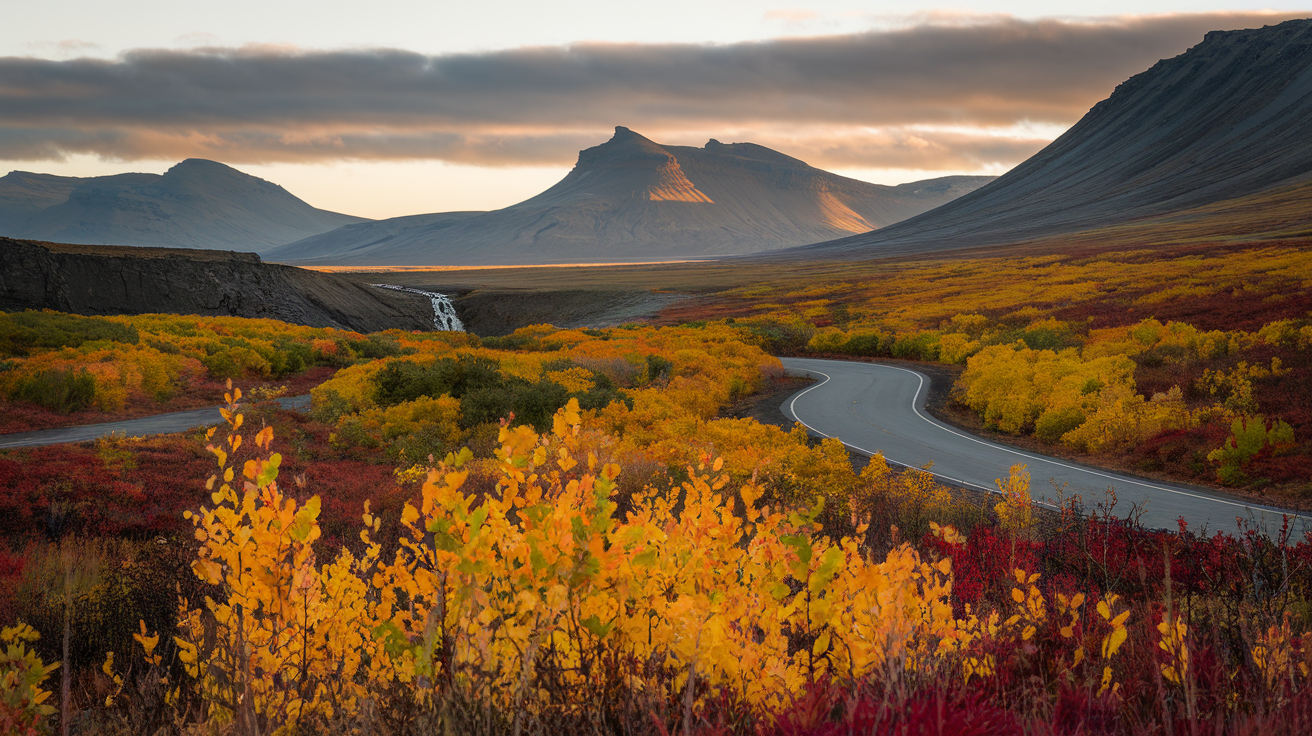
Fall brings one of Iceland’s most jaw-dropping natural shows – the aurora borealis. September marks the return of dark enough nights for these dancing lights to make their grand appearance.
The northern lights typically become visible from late August, but September and October offer that sweet spot of milder temperatures and increasing darkness that serious aurora hunters crave. The science is pretty simple – clearer skies plus darker nights equals better chances to see those green and purple waves shimmer across the heavens.
Pro tip: Head away from Reykjavik’s city lights. Places like Thingvellir National Park or the Snæfellsnes Peninsula provide dramatic foregrounds for your northern lights photos. And yes, bring a tripod if you’re serious about capturing this magical phenomenon.
Enjoying Reduced Tourist Traffic
Summer crowds? Gone. Winter tourists? Not yet arrived. Fall is that magical middle ground when you’ll actually hear Icelandic spoken more than English in many spots.
The significant drop in visitors means:
-
Hotels drop their prices (sometimes by 30-40%)
-
You can photograph waterfalls like Skógafoss without dodging selfie sticks
-
Restaurant reservations become easier to snag
-
Road trips feel more like actual adventures rather than follow-the-campervan exercises
This breathing room transforms your experience from “doing Iceland” to actually experiencing Iceland. The Golden Circle route that can feel like a theme park line in July suddenly becomes the serene natural wonder it’s meant to be.
Fall Foliage in Iceland’s Landscapes
While Iceland isn’t known for dense forests, its autumn landscape delivers surprising bursts of color. The low-growing birch trees, dwarf willows, and berry bushes transform into a carpet of rusty reds, burnt oranges, and golden yellows against the ever-present volcanic black.
The highlands particularly shine during this season. Landmannalaugar’s already colorful rhyolite mountains gain new dimensions when framed by autumn foliage. Even the mosses covering lava fields shift through different shades, creating subtle color gradients you’d completely miss during peak green summer.
Photographers take note: the lower angle of the fall sun creates that magical golden-hour lighting for much longer periods, turning ordinary landscapes into extraordinary ones.
Weather Expectations and Appropriate Packing
Fall weather in Iceland plays by its own rules. One moment you’re basking in sunshine, the next you’re watching horizontal rain from a roadside shelter. September typically hovers between 40-50°F (5-10°C), while October starts dipping toward winter temperatures.
Your packing strategy should embrace layers:
-
Base layer: Moisture-wicking thermals
-
Mid layer: Fleece or wool sweaters
-
Outer layer: Waterproof and windproof jacket
-
Accessories: Hat, gloves, waterproof hiking boots, and extra socks
The real MVP item? A truly waterproof jacket – not water-resistant, not shower-proof, but something that can handle being sprayed directly by Skógafoss and keep you dry.
Roads remain mostly accessible in early fall, though Highland F-roads begin closing by late September. Always check road conditions daily at road.is before setting out, as autumn storms can arrive with little warning.
Winter in Iceland (November-March): Enchanting Ice Wonderland
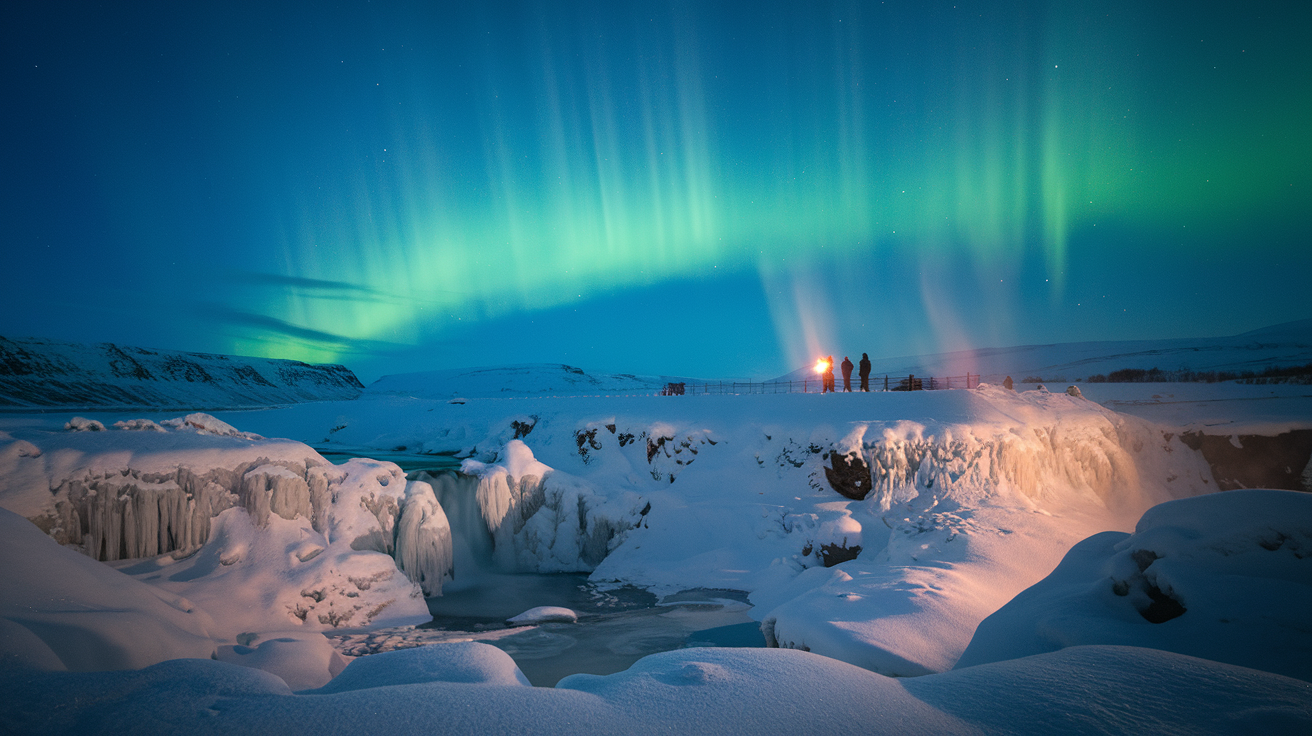
Winter in Iceland isn’t just cold—it’s magical. When the landscape transforms into a snow-covered wonderland, you’ll discover a completely different country than summer visitors experience. The days are shorter, sure, but those precious hours of daylight bathe everything in a golden glow that photographers dream about. And those long nights? They’re perfect for what comes next.
A. Experiencing the Magic of Aurora Borealis
The northern lights dancing across Iceland’s winter sky might just ruin you for life. Nothing compares to standing in the silence of an Icelandic night, breath fogging in the air, watching green, purple, and blue lights shimmer overhead.
Best spots? Get away from Reykjavík’s light pollution. Head to Þingvellir National Park, the black beaches near Vík, or anywhere along the northern coast. The lights are most active between 10 PM and 2 AM, but they’re unpredictable divas—download an aurora forecast app and be ready to chase them when conditions look good.
Pro tip: Bring a tripod for your camera and learn your night settings before you freeze your fingers trying to figure them out in -10°C temperatures.
B. Ice Cave Exploration and Glacier Adventures
Winter is the only time you can access Iceland’s legendary blue ice caves. These sapphire cathedrals form when summer meltwater carves tunnels through the glaciers, which then freeze solid in winter.
The most famous caves are under Vatnajökull, Europe’s largest glacier. Every year they’re different—nature’s constantly changing art installation. You absolutely need a guide for this; the caves can be dangerous and guides know which ones are stable.
Beyond caves, winter offers the best glacier hiking conditions. The ice is more stable, and crampons bite better into the frozen surface. The contrast between the white ice and your bright safety gear makes for killer Instagram shots.
C. Winter-Only Activities and Excursions
Winter unlocks experiences summer visitors miss out on:
-
Snowmobiling across glaciers – Racing across Langjökull’s vast white expanse feels like starring in your own action movie
-
Super Jeep tours – These monster vehicles access highland areas that would be impossible in regular cars
-
Hot spring hunting – There’s nothing like soaking in 40°C water while surrounded by snow
-
Ski touring – The Troll Peninsula offers incredible backcountry routes
-
Dog sledding – Less common but available in northern regions
Winter activities need advance booking—they’re popular and group sizes are limited for safety.
D. Holiday Celebrations and Traditions
Iceland’s Christmas season is delightfully weird. Forget one Santa—they have 13 Yule Lads, mischievous troll brothers who come down from the mountains one by one in the 13 days before Christmas.
December brings Christmas markets in Reykjavík and Akureyri, with traditional foods like laufabrauð (leaf bread) and hangikjöt (smoked lamb). New Year’s Eve is spectacular—imagine 200,000 people setting off fireworks simultaneously with zero regulations. The sky explodes for hours.
Þorrablót in January and February celebrates midwinter with Viking-era foods that are… challenging. Hákarl (fermented shark) and svið (sheep’s head) aren’t for the faint-hearted, but they’re served alongside plenty of brennivín (caraway schnapps) to help them go down.
Winter driving in Iceland separates the adventurous from the sensible. If you’re determined to self-drive:
-
Rent a 4×4 – Not just any SUV, but a proper 4WD with high clearance
-
Check road.is obsessively – Road conditions change hourly
-
Pack emergency supplies – Food, water, blankets, and a charged phone
-
Download offline maps – Cell service disappears in remote areas
-
Budget extra time – A 3-hour summer drive might take 5+ in winter
Many roads close entirely, including most F-roads and highland routes. The Ring Road stays open except during severe storms, but even it can close temporarily.
Smart travelers base themselves in one or two locations and take guided tours instead of attempting epic road trips. You’ll see more and stress less.
Spring in Iceland (April-May): Nature’s Awakening
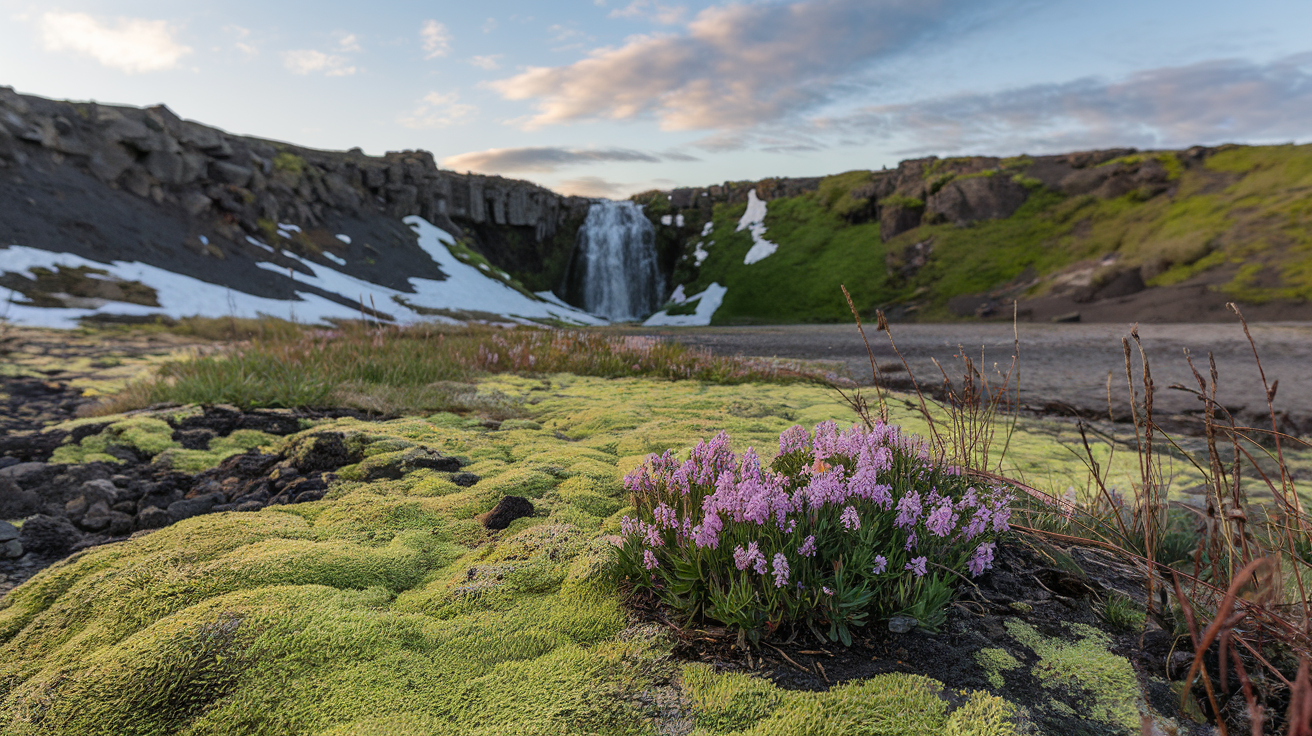
Spring in Iceland is pure bird-watching paradise. Over 70 species of birds migrate to Iceland between April and May, turning the entire country into a giant aviary.
Picture this: You’re standing on the cliffs of Látrabjarg in the Westfjords, and thousands of puffins are swooping around you. These adorable “clowns of the sea” return to Iceland in late April and stick around until August. But there’s something magical about seeing them first arrive and establish their nesting grounds.
The Myvatn area in North Iceland? It transforms into waterfowl heaven with more duck species than anywhere else in Europe. You’ll spot harlequin ducks, Barrow’s goldeneyes, and the rare gyrfalcon if you’re really lucky.
Grab your binoculars and head to these hotspots:
-
Flatey Island: A tiny island packed with birds
-
Jökulsárlón: Great skuas and Arctic terns patrol the glacial lagoon
-
Dyrhólaey: Atlantic puffin central, plus incredible views
Don’t worry if you’re not a hardcore birder. Even casual observers get blown away by the sheer volume and variety. The birds are simply everywhere in spring.
Witnessing Powerful Waterfalls at Peak Flow
Iceland’s waterfalls show off big time in spring.
When the snow starts melting across the highlands, it feeds every waterfall in the country with maximum power. Dettifoss, Europe’s most powerful waterfall, becomes even more thunderous. You’ll feel the ground vibrate beneath your feet as 500 cubic meters of water crash down every second.
The Golden Circle’s Gullfoss takes on a whole new personality in spring. The meltwater gives it this raw, primal energy that summer visitors simply don’t experience. And the spray? It creates these perfect rainbows on sunny days that’ll have your Instagram followers thinking you’ve photoshopped your pictures.
Even smaller falls like Skógafoss and Seljalandsfoss transform from pretty photo spots to roaring natural wonders. The water volume doubles or triples compared to summer, creating that dramatic misty atmosphere that makes you feel tiny against nature’s power.
Bonus: You’ll actually have space to enjoy these spectacles without fighting through summer crowds. Want that perfect waterfall shot without 50 other tourists in the frame? Spring’s your answer.
Value Pricing Before Summer Rush
Smart travelers hit Iceland in spring for one big reason: your money goes way further.
Accommodation prices can be 30-40% lower than peak summer rates. That charming guesthouse that would cost you $200 a night in July? You might snag it for $120-140 in May. And you’re not sacrificing quality or location – just avoiding the premium pricing that comes with peak demand.
Car rentals tell the same story. A 4×4 that costs $150 daily in summer often drops to around $90-100 in spring. That adds up fast on a 10-day Iceland adventure.
Even tours offer shoulder-season discounts. Whale watching, glacier hikes, and horseback riding tours frequently run “spring special” rates to attract visitors before the summer crush.
Here’s what your savings might look like:
| Expense | Summer Price | Spring Price | Savings |
|---|---|---|---|
| 10-day car rental | $1,500 | $950 | $550 |
| 9 nights accommodation | $1,800 | $1,170 | $630 |
| Whale watching tour (2 people) | $240 | $180 | $60 |
That’s over $1,200 you could put toward incredible meals, extra excursions, or maybe extending your trip by a few days.
Weather Transitions and What to Expect
Spring weather in Iceland is like a moody teenager – unpredictable but not without its charms.
April starts with average temperatures around 3-5°C (37-41°F), climbing to 6-10°C (43-50°F) by late May. But don’t let those numbers fool you. You’ll experience days where you’re peeling off layers under brilliant sunshine, followed by sudden snow flurries or sideways rain the next morning.
The Icelandic saying “If you don’t like the weather, wait five minutes” becomes your daily reality. Pack layers. Seriously. T-shirt, fleece, waterproof jacket, hat, gloves – you might wear all of them in a single day.
What makes spring worth these weather gymnastics? The light. By May, you’re getting 18+ hours of daylight. Sunset happens around 10:30 PM, with this gorgeous extended golden hour that photographers dream about.
Road conditions improve dramatically through spring. Major highways are generally clear, though highland F-roads remain closed until June. You might encounter occasional snow on mountain passes in April, but nothing a regular rental car can’t handle with careful driving.
The winds tend to be more merciful than winter too, though still strong enough to remind you why Icelanders built their traditional houses low to the ground. Always check road conditions at road.is before heading out for the day.
Regional Variations in Iceland’s Climate

Iceland might be small, but don’t let that fool you. The weather here plays by different rules depending on which side of the island you’re exploring.
The South Coast is Iceland’s milder sibling. Thanks to the Gulf Stream, temperatures hover around 50-60°F (10-15°C) in summer and rarely dip below 28°F (-2°C) in winter. Rain? You bet. The south gets drenched with about 80 inches annually, making it significantly wetter than the north.
Meanwhile, North Iceland is playing an entirely different game. Temperatures run about 5-10°F colder year-round, and winter storms can shut down mountain passes for days. The upside? The north sees nearly half the precipitation of the south, meaning clearer skies for northern lights hunting from September through April.
A quick comparison:
| Region | Summer Temps | Winter Temps | Precipitation | Best For |
|---|---|---|---|---|
| South | 50-60°F (10-15°C) | 28-38°F (-2 to 3°C) | Heavy | Summer hiking, waterfalls |
| North | 45-55°F (7-13°C) | 18-30°F (-8 to -1°C) | Moderate | Northern lights, fewer crowds |
B. Micro-Climates in the Highlands and Westfjords
The Highlands throw Iceland’s weather rulebook out the window. This central region sits higher than the rest of the country and creates its own weather patterns that can change faster than you can say “Eyjafjallajökull.”
Summer visitors to the Highlands might experience all four seasons in a single day – morning frost, midday warmth, afternoon rain, and evening wind chill. The area remains inaccessible from October through mid-June due to heavy snow and dangerous conditions. Even in July and August, temperatures rarely climb above 50°F (10°C).
The Westfjords, that dramatic peninsula in northwest Iceland, operates on its own weather frequency too. These deep fjords create wind tunnels in winter while sheltering certain valleys in summer. Snow can linger in mountain passes until July, yet beaches might feel surprisingly pleasant on calm summer days.
What makes these micro-climates particularly tricky:
-
Temperature can drop 10-15°F with every 1,000 feet of elevation gain
-
Wind chill factors are brutal and often underestimated
-
Cloud cover can be localized to specific valleys or peaks
-
Roads become impassable with little warning
C. Urban Reykjavik vs. Rural Experiences
Reykjavik’s urban setting creates a weather bubble that doesn’t always reflect what’s happening in the countryside. The city’s concrete, buildings, and human activity generate a heat island effect that keeps temperatures 3-5°F warmer than surrounding areas.
This city-country divide becomes especially apparent in winter. While Reykjavik might be dealing with slush and rain, rural areas just 30 minutes away could be buried under feet of pristine snow. The city’s snow removal services also mean you’ll rarely need extreme winter gear in the capital itself.
Rural Iceland delivers the raw, unfiltered weather experience. Wind feels sharper without buildings to block it. Temperature swings hit harder without urban heat moderation. And precipitation – whether snow, sleet, or sideways rain – makes its presence known with dramatic flair.
What travelers often miss: Reykjavik weather forecasts don’t apply to the rest of the country. The infamous “if you don’t like the weather, wait five minutes” saying becomes even more true once you leave city limits. Pack for versatility rather than specific conditions, especially if your itinerary includes both urban and rural destinations.
Planning Your Perfect Iceland Trip

You’ve booked your Iceland trip, but now what? Timing is everything. Summer (June-August) gives you midnight sun for endless hiking, waterfall chasing, and puffin spotting. Those 24 hours of daylight mean more exploring and less sleeping!
Winter (November-March) transforms Iceland into a completely different world. This is prime northern lights season – nothing beats watching those green swirls dance across the sky. Ice cave tours only happen in winter when glaciers stabilize enough for safe exploration.
Spring and fall? These shoulder seasons are Iceland’s best-kept secrets:
| Season | Perfect For | Avoid |
|---|---|---|
| Summer | Hiking, highland roads, whale watching, festivals | Budget travel, solitude |
| Winter | Northern lights, ice caves, cozy hot springs | Highland driving, long hikes |
| Spring | Puffins arriving, waterfalls at peak flow, fewer tourists | Consistent weather |
| Fall | Autumn colors, cheaper prices, northern lights begin | Highland access closing |
Weather-Proof Itinerary Development
Iceland’s weather changes faster than you can say “Eyjafjallajökull.” Your best strategy? Plan A, B, and sometimes C for each day.
Group activities by region and weather-dependency. If fog ruins your glacier hike plans, pivot to nearby hot springs instead. The Golden Circle works in nearly any weather, while Westfjords adventures need clearer conditions.
Build buffer days into your itinerary – especially for winter travel when storms can shut down roads for days. Download the Vedur app (Iceland’s weather service) and check road conditions at road.is every morning.
Smart travelers book accommodations in clusters rather than moving every night. Base yourself in Reykjavik, Vik, and Akureyri for 2-3 nights each to minimize weather-impacted travel days.
Essential Packing for Any Season
The golden rule of Iceland packing: layers, layers, layers. Even summer days can swing from 60°F sunshine to 40°F rain in hours.
Your non-negotiable items:
-
Waterproof outer layer (jacket AND pants)
-
Insulating mid-layer (fleece or wool)
-
Moisture-wicking base layers
-
Waterproof hiking boots (broken in before arrival)
-
Swimsuit (for hot springs, regardless of season)
-
Polarized sunglasses (glare from snow/water is intense)
Winter visitors need thermal everything plus ice grippers for your boots. Summer travelers should pack an eye mask for sleeping through midnight sun.
Don’t waste suitcase space on fancy outfits – Icelanders dress practically, and nobody will judge your repeat hiking outfit at dinner.
Booking Strategies for Different Times of Year
Summer bookings require planning 6-9 months ahead, especially for popular spots like the Blue Lagoon or accommodation near Jökulsárlón. Prices peak in July-August, so book early or pay premium rates.
Winter travelers enjoy more flexibility except during Christmas and New Year’s when Icelanders travel domestically. However, northern lights tours fill quickly during clear weather forecasts.
Car rental strategies change seasonally too. Summer requires booking months ahead, but 4WD is optional unless you’re tackling F-roads. Winter absolutely demands 4WD with studded tires, but you’ll find better deals.
Score major savings by targeting May or September – you’ll get decent weather without high-season prices. Most attractions remain open, but tourist numbers drop dramatically.
Flight prices follow predictable patterns – Tuesday bookings for departures 6-8 weeks later typically offer the best value for Iceland-bound travelers.

As you plan your Icelandic adventure, consider what matters most to you—weather conditions, specific activities, crowd levels, or budget concerns. With the right preparation and timing, Iceland promises a journey unlike any other, regardless of when you visit. Pack accordingly, remain flexible with your itinerary to accommodate Iceland’s changeable weather, and prepare to be amazed by this land of fire and ice that captivates travelers in every season.

